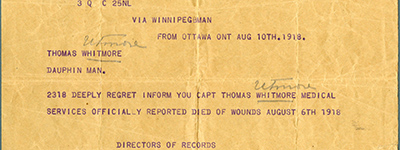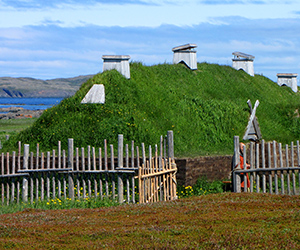CANADA HISTORY - Govenors General
The Lord Lisgar

Sir John Young, later Baron Lisgar, was Canada’s second Governor General after Confederation, serving from 1869 to 1872. An Irish nobleman, lawyer, and experienced British administrator, Young came to Canada during a critical period of its early development as a unified nation. His tenure was marked by steady leadership, diplomatic skill, and a deep admiration for Canadian society, although his initial perceptions of Confederation and Canada’s future were somewhat at odds with the country’s trajectory. This article delves into his biography, accomplishments, and the key events and challenges he faced while serving as Governor General.
Early Life and Career
John Young was born on August 31, 1807, in Bombay, India, the son of Sir William Young, 1st Baronet, of Baillieborough Castle, County Cavan, Ireland. His family had strong ties to the British aristocracy, and Young inherited the title of baronet upon his father's death in 1848. After being educated in Ireland, he went on to study law at Lincoln’s Inn, London, and was called to the bar in 1834.
Young began his political career as a Member of Parliament for County Cavan in 1831, a seat he held until 1855. During this time, he became involved in British government and administration, holding positions such as Lord of the Treasury and Secretary to the Treasury. His legal and political background gave him a solid foundation in governance and diplomacy, which would serve him well in his later roles.
Young’s career took a turn toward imperial administration when he was appointed High Commissioner of the Ionian Islands (1847–1851) and later Governor of New South Wales, Australia (1861–1867). These roles exposed him to the complexities of governing colonial territories, further honing his skills in diplomacy and leadership. His experiences abroad contributed to his reputation as a capable and adaptable administrator, making him a natural choice for the position of Governor General of Canada.
Appointment as Governor General of Canada
In 1869, following the resignation of Viscount Monck, John Young was appointed as Canada’s second Governor General, taking office on February 2, 1869. At this time, Canada was only two years into Confederation, and the new Dominion was still grappling with internal tensions, regional differences, and the challenges of unifying its provinces under a single federal government.
Initially, there was some disappointment in Ottawa over Young’s appointment. His predecessor, Viscount Monck, had been a prominent figure with an aristocratic title, and Young, then a baronet, was seen as a step down in rank. However, the Canadian government had reduced the salary and allowances for the position, limiting the pool of interested candidates. Despite these concerns, Young’s extensive experience in governance and his measured approach would prove valuable to Canada’s early development.
Vision for Canada and Early Impressions
Upon arriving in Canada, Young had certain reservations about Confederation and its long-term implications. Like many British officials at the time, he wondered whether Confederation might lead to Canada’s eventual separation from the British Empire and closer alignment with the United States. However, his experiences in Canada soon changed this perception.
During his time in office, Young was struck by the vigor, vision, and ambition of Canadians. He saw firsthand the dedication of the government and people to building a strong, unified nation, and he became increasingly impressed with their development plans. His early concerns about Confederation dissipated as he came to recognize Canada’s potential to thrive within the British Empire, and he developed a deep respect for the country’s growing sense of identity and purpose.
Major Events During His Term
The Red River Rebellion (1869–1870)
One of the most significant events during Sir John Young’s tenure was the Red River Rebellion, which occurred in 1869–1870. The rebellion was led by Métis leader Louis Riel, who opposed the transfer of the Hudson’s Bay Company’s vast Rupert’s Land territory (which included the Red River Settlement) to the Canadian government without adequate protection for the rights of the local Métis population.
The situation presented a major challenge for Young, as the new Canadian government sought to assert control over its expanding territory while addressing the concerns of the Métis. Young worked closely with Prime Minister John A. Macdonald to manage the crisis, balancing the need for military intervention with the desire to avoid escalating violence.
The resolution of the rebellion led to the creation of Manitoba as Canada’s fifth province in 1870, with specific protections for the Métis people and their land rights. Although Young’s role in the rebellion was largely behind the scenes, his diplomatic support helped facilitate a peaceful settlement, which avoided further bloodshed and set a precedent for future relations with Indigenous communities.
The Arrival of Prince Arthur of Connaught
One of the more pleasant events during Young’s term as Governor General was hosting Prince Arthur, Duke of Connaught, during his tour of Canada in 1869. Prince Arthur, the son of Queen Victoria, was warmly welcomed across the country, and his visit strengthened ties between Canada and the British monarchy. Little did anyone know at the time, but Prince Arthur would later return to Canada as its tenth Governor General, serving from 1911 to 1916.
Young and his wife, Lady Lisgar, were instrumental in ensuring that Prince Arthur’s visit was a success. Their gracious hospitality and attention to detail endeared them to the young prince, and the visit helped solidify Canada’s loyalty to the Crown during a formative period in the nation’s history.
Challenges and Administrative Success
Sir John Young’s tenure was also marked by the ongoing challenges of building Canada’s infrastructure, economy, and governance systems. He was deeply involved in the efforts to promote immigration, agricultural development, and trade, seeing these as essential to Canada’s future prosperity. His pragmatic approach to governance helped steer Canada through these early years of nation-building, as the country began to grow in confidence and stature.
Although not a flashy or ostentatious leader, Young was highly regarded for his administrative abilities. He made many friends during his time in Canada and was careful to avoid the political missteps that could have marred his tenure. His calm and steady leadership provided continuity during a period of great change.
Elevation to the Peerage and Departure from Canada
In 1870, while serving as Governor General, John Young was elevated to the peerage, becoming Baron Lisgar of Baillieborough, a recognition of his long and distinguished career in public service. The elevation to the peerage was well received in Canada, helping to assuage earlier concerns about the relative status of the new Governor General compared to his predecessor.
Lisgar’s term as Governor General ended in June 1872, after which he returned to his family estate in Ireland. His departure was marked by widespread respect and admiration for his contributions to Canada during its early years of Confederation. Although not as high-profile as some of his successors, Lisgar’s work laid the foundation for the continued growth and stability of the new nation.
Legacy and Death
Sir John Young, Baron Lisgar, passed away on October 6, 1876, at his family home in Ireland. His legacy as Governor General of Canada remains one of steady and effective leadership during a pivotal time in the country’s history. His ability to navigate the political complexities of post-Confederation Canada, his diplomatic handling of the Red River Rebellion, and his support for the country’s development initiatives earned him the respect of both Canadians and British officials.
While his time in Canada was relatively short, his contributions to the early years of Confederation helped ensure the stability and success of the young nation. His life of public service, which spanned multiple continents and roles within the British Empire, reflected his commitment to governance and diplomacy. In Canadian history, Lord Lisgar is remembered as a capable and diligent leader who played a crucial role in the country’s formative years.
Sir John Young, later Baron Lisgar, served as Canada’s second Governor General during a critical time in the nation’s early development. His background as an Irish nobleman and experienced British administrator prepared him well for the challenges he would face in Canada, from the Red River Rebellion to the growing pains of a newly unified country. His calm and steady leadership, diplomatic skills, and support for Canada’s development efforts helped lay the groundwork for the country’s continued growth and success. Though less celebrated than some of his successors, Lord Lisgar’s contributions to Canadian history are significant and enduring.
Cite Article : Reference: www.canadahistory.com/sections/documents/documents.html
Source: NA



